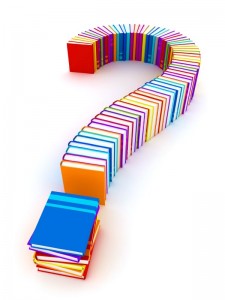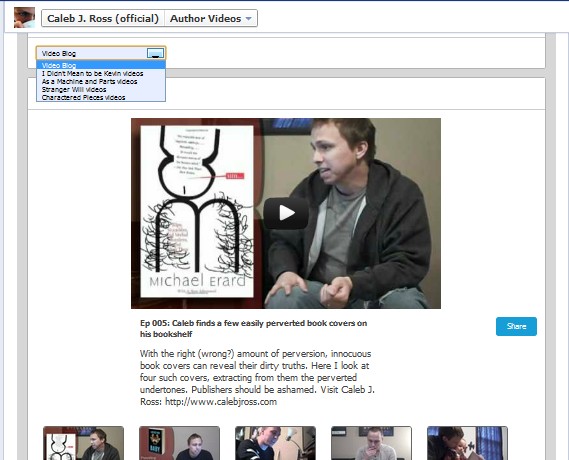How can authors use Google Analytics Events Tracking to understand their readers?
 How many times did readers download your sample chapters? How many times did readers view your new book trailer? How many times did your website visitors click a button to buy one of your books? How many times did someone click a link to read one of your stories posted at another website? All of these items can be tracked using Event Tracking in Google Analytics.
How many times did readers download your sample chapters? How many times did readers view your new book trailer? How many times did your website visitors click a button to buy one of your books? How many times did someone click a link to read one of your stories posted at another website? All of these items can be tracked using Event Tracking in Google Analytics.
What is Event Tracking? I’ll leave the details up to Google itself, but for our purposes think of Event Tracking as a second, deeper level of website analytics. Most of you are probably using your analytics program primarily to track how users interact with your website on a macro level (how many visits, most popular pages, how long visitors stay, etc). Event Tracking allows a micro level of tracking, where actual clicks and downloads on specific pages can be tracked.
Anywhere a user can click, Event Tracking can be used. Let’s look at an example that an author could definitely use.
How many times did readers download my sample chapters?
Let’s say you have a sample chapters .pdf that users can download. It’s been available for a while, but you’ve decided to start promoting it more. Is the promotion working?
In this case, you’d likely put something like the following as your Event Tracking tag. The important part is highlighted in blue. Notice everything that is not blue is a simple html link. Nothing special or complicated there.
[box title=”” color=”#f00″]<a href="https://calebjross.com/samplechapters.pdf" onClick="_gaq.push(['_trackEvent', 'samples', 'download', 'samplechapters.pdf']);">Click to download sample chapters</a>[/box]
What does this code mean?
This example has the specific labels replaced with dummy labels:
[box title=”” color=”#f00″]<a href="https://calebjross.com/samplechapters.pdf" onClick="_gaq.push(['_trackEvent', 'category', 'action', 'label']);">Click to download sample chapters</a>[/box]
And here is what each of the bolded codes means:
Category
This is the name you supply for the group of objects you want to track. It is important to think in terms of scalability, so that should you want to track more events in the future, you can assign the tracked events to appropriate buckets. This is why I use the category ‘samples’ rather than something hyper-specific like ‘NovelChapterDownloads.’ This way, I could use the same category of ‘samples’ should I decide to offer short story samples or even sample chapters for future books.
Action
This tag is commonly used to define the type of user interaction for the event. In this case, I use ‘download.’ With a .pdf there really is only this one option. If I were to track video events, however, I could use any variation of ‘play,’ pause,’ ‘stop’ or something else.
Label
This tag is optional. This can be any bit of additional data that might help understand your data. In the case of a .pdf download, I tend to use the file name for this label.
What does the end data look like? Here’s an example, tracking link clicks to various pages, pulled from the doteduguru.com website. In this example we are looking primarily at the Label tag. You can see the number of interactions on each of these Labels as well as which page they happened on.
Some possible scenarios
I mentioned a few at the beginning of this post (How many times did readers download your sample chapters? How many times did readers view your new book trailer? How many times did your website visitors click a button to buy one of your books? How many times did someone click a link to read one of your stories posted at another website?). By now, you should have a general understanding of what event tracking can do. But you can also adapt its use for very specific ends.
Does your book interest readers?
Let’s say you have a finished novel. You want to post three sample chapters on your site. However, instead of posting all three chapters in a single .pdf, why not post each one as a separate .pdf. That way, you can gauge reader interest in your book by measuring the number of subsequent chapter downloads after the first. If you find that your first chapter was downloaded 300 or so times, but the second was only downloaded 6 times, then you may want to revisit your first chapter.
How interesting is your title?
You could post a vote on Facebook for readers to give feedback on a title. Or, you could post sample chapters to a few “different” books and measure which one received the most interaction. Each file would contain the same chapters, but the titles would be different. Does Nerdy Babes from Planet Chess get more downloads than Intelligent Females from the Game Planet? I’m not saying you should use these results blindly, but they may offer some insight.
Measure the effectiveness of an online advertising campaign
I’ll get more into this option in my next SEO for Authors post. Basically, you can establish an ad, in my case on Facebook, and drive clicks to a specific landing page. That page can have tracking on various action buttons. Activity can then be measured to determine success. Stay tuned to this SEO for Authors blog category for more on this Event Tracking possibility. Better yet, subscribe to this blog RSS feed to ensure that you never miss a post. Another option, subscribe using the button below to get new blog posts sent to you via email.



[…] using event tracking to see how many times your chapter samples were downloaded […]
[…] (one for Stranger Will and one for Charactered Pieces). Each purchase button has been appended with event tracking tags so that Google Analytics can tell me exactly how many times each button is clicked. Because I […]